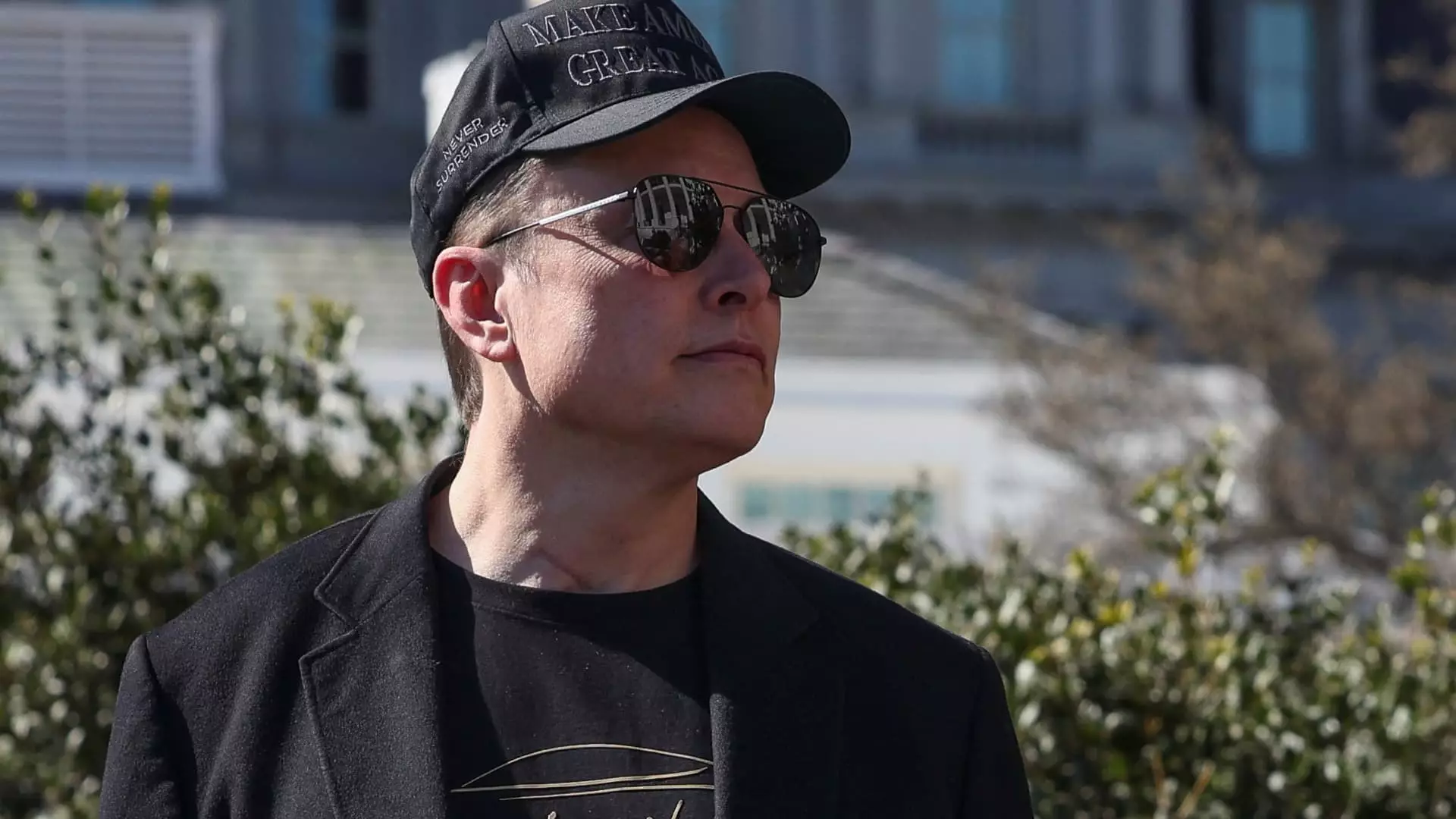Tesla’s recent first-quarter earnings report makes for a disheartening read, revealing staggering declines across key performance indicators. The electric vehicle giant fell short of analyst expectations by a substantial margin, with earnings per share reported at just 27 cents—far below the anticipated 39 cents. This underperformance reflects a growing concern among investors about Tesla’s trajectory in an increasingly competitive market. A stark 20% drop in automotive revenue to $14 billion, down from $17.4 billion a year earlier, signals that the company’s dominance in the EV sector is faltering, amidst rising competition and economic upheavals.
The fall from grace for Tesla is pronounced, with total revenue sliding 9% to $19.34 billion from $21.3 billion last year. Such figures indicate a troubling trend, as the automaker struggles to adapt and innovate effectively while facing the relentless pressure of market competitors and political turbulence. The implications of these numbers extend beyond mere financial performance; they point to a potential identity crisis for a company that once stood as the shining beacon of electric vehicle technology.
Political Headwinds and Economic Uncertainty
A significant factor contributing to Tesla’s challenges is the evolving political landscape in the United States. CEO Elon Musk’s close ties with the Trump administration, particularly his involvement in efforts to downsize government, have raised eyebrows in the business community. This political maneuvering has led to the implementation of tariffs that threaten the costs of essential parts and supplies for electric vehicle production.
The uncertainty created by these policies could not only inflate manufacturing costs but also disrupt Tesla’s ability to maintain its pricing strategy amid fierce competition. The resultant instability is palpable; the company finds itself at the mercy of shifting trade policies which threaten to curtail its growth ambitions. The phrase from Tesla stating that “uncertainty in the automotive and energy markets continues to increase” perfectly encapsulates the precarious situation that is further complicated by Musk’s controversial political affiliations and decisions.
Struggles Against Domestic and Global Competitors
Compounding Tesla’s woes is the intensifying competition for EV market share, particularly notable in international arenas like China, where lower-cost electric vehicles have become increasingly appealing. The clear message from this landscape is that consumer preferences are evolving, and if Tesla cannot adapt quickly, the company risks being outpaced by competitors, both domestic and overseas.
The rise of competitors who are financially nimble and provide lower-cost alternatives is a stark reminder that innovation alone does not guarantee market leadership. Electric vehicle innovation must be matched with strategic competitive pricing and robust market responsiveness. The decline in deliveries—down 13% year-over-year to 336,681 vehicles—underscores the urgency of these challenges.
The Cost of Ambition: AI and Automation Initiatives
One of the focal points of Tesla’s narrative has been its ambitious strides into artificial intelligence and automation, yet these very projects have become double-edged swords. With operating income plunging 66% to $400 million and a kicked operating margin below 2.1%, the soaring costs associated with AI initiatives are increasingly unsustainable.
Tesla had to rely on income from environmental regulatory credits to avoid significant losses in automotive sales. This dependency is concerning; it raises questions about the core business model’s viability when stripped of such external financial supports. Tesla’s lofty promises of AI-driven advancements, including the much-anticipated rollout of a driverless taxi service in Austin, Texas, may be more aspirational than attainable if not checked with sound financial fundamentals.
Energy Sector: A Bright Spot Amidst Dim Prospects
Interestingly, not every sector of Tesla’s business is faltering. Its energy generation and storage division reported a remarkable 67% surge in revenue to $2.73 billion. As the grid stabilizes and energy demands shift, this arm of Tesla cultivates opportunities through its infrastructure. Nonetheless, the company must tread carefully; without a robust automotive backbone, it could find itself at risk of being pigeonholed as merely an energy company rather than the holistic provider of sustainable transport.
The reliance on foreign suppliers for components in its energy sector further complicates matters, as fostering strong domestic supply chains will be pivotal in navigating the intricate web of international trade challenges.
As Tesla moves forward, it faces existential questions surrounding its resilience and adaptability. The 2024 earnings mishap serves as a clear warning that complacency is no longer an option. As political and market landscapes shift with unprecedented speed, Tesla must reassert its innovative spirit while also addressing the stark realities of financial sustainability and competitive survival.

